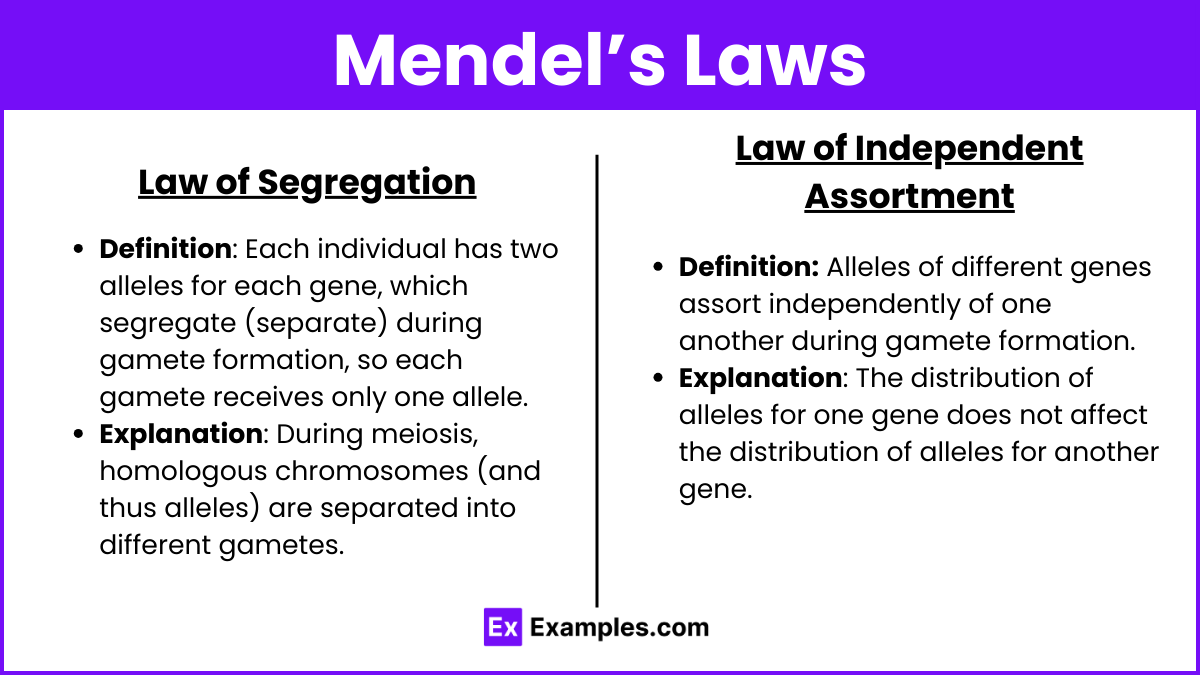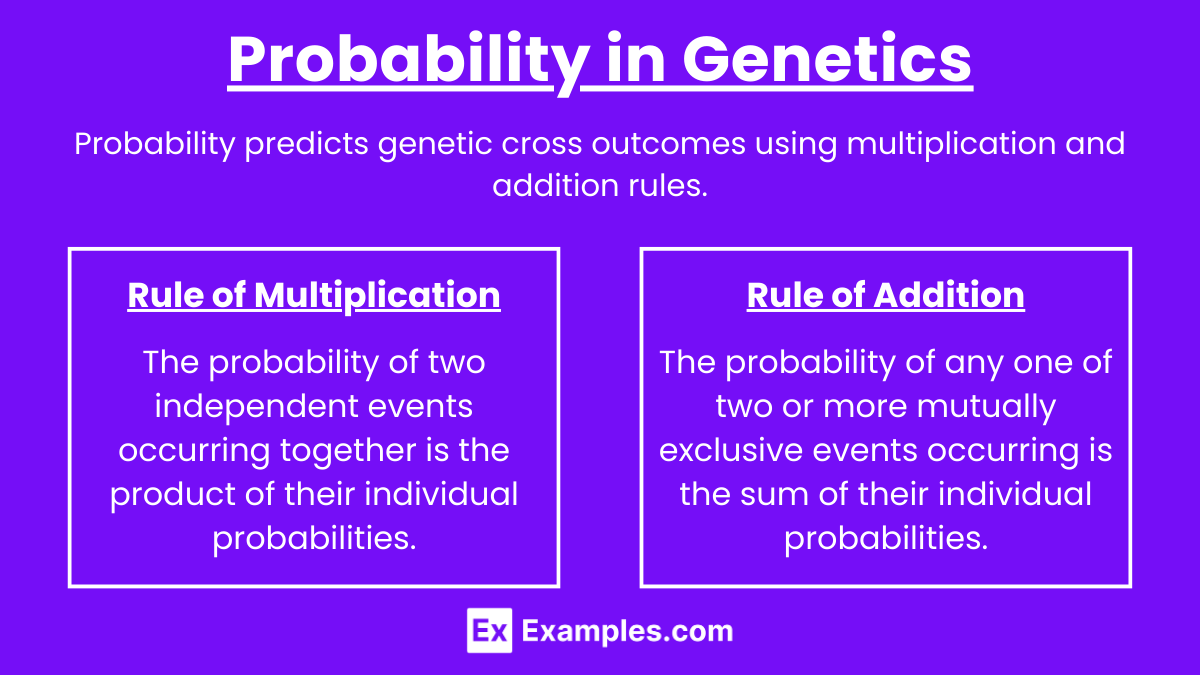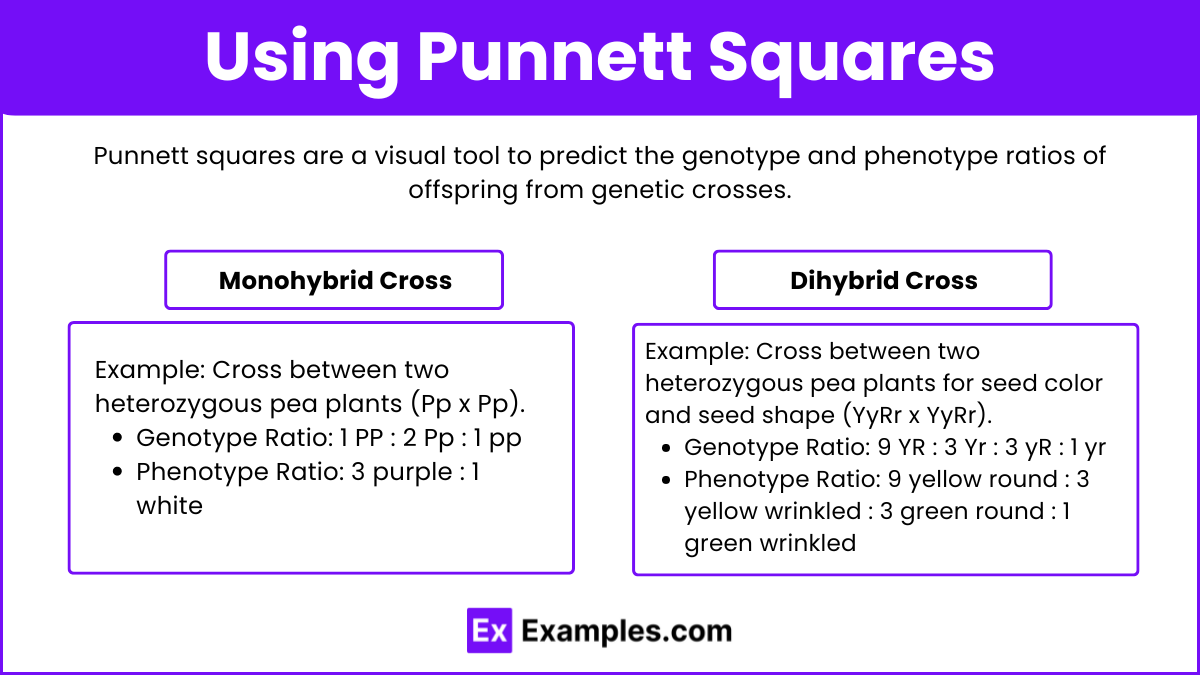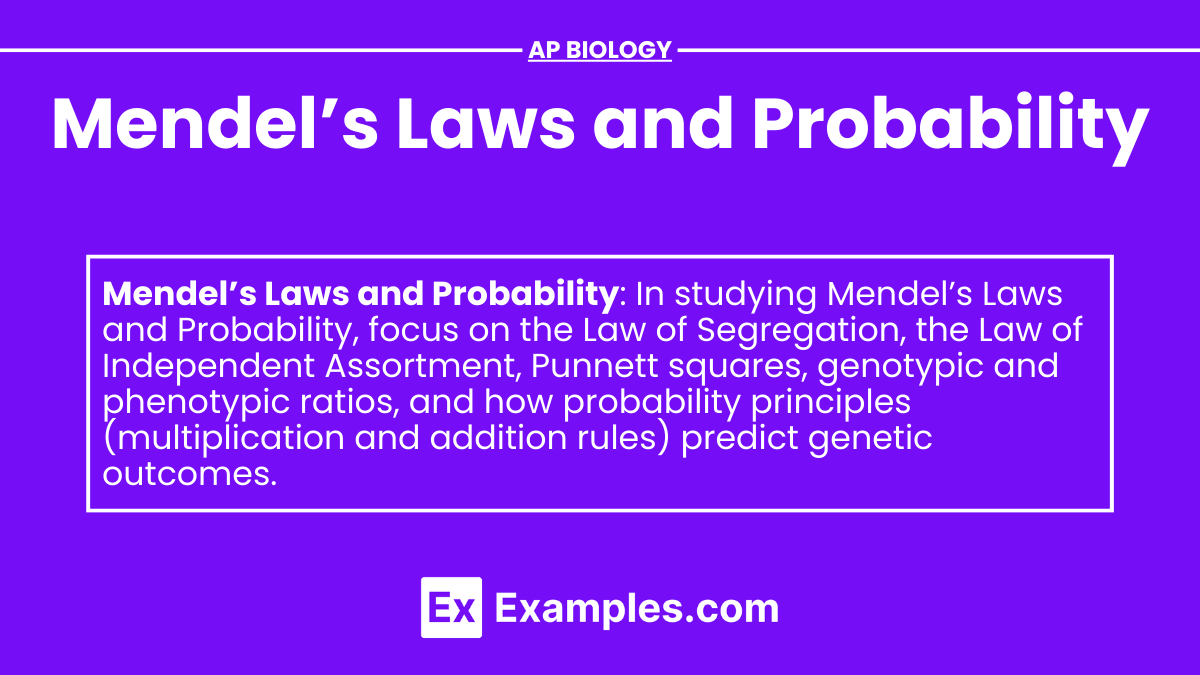Mendel’s Laws and Probability, key concepts in AP Biology, explain how traits are inherited through DNA and RNA processes within the nucleus. These laws describe the segregation and independent assortment of alleles, determining the genotype of offspring. Understanding these principles allows predictions of genetic outcomes, essential for studying heredity and genetic variation.
Learning Objectives
By studying Mendel’s Laws and Probability, students will understand how chromosomes and DNA govern inheritance patterns within the cell cycle. They will learn to use a Punnett Square to predict genetic outcomes and recognize how mutations can alter these predictions. Additionally, they will explore the relationship between these laws and cell theory, and how genetic information passes through the cell membrane during reproduction.
Overview of Mendel’s Laws
Mendel’s Laws consist of the Law of Segregation and the Law of Independent Assortment. These laws explain how traits are passed from parents to offspring through discrete units called genes.
Mendel’s Laws

Law of Segregation
Definition: Each individual has two alleles for each gene, which segregate (separate) during gamete formation, so each gamete receives only one allele.
Explanation: During meiosis, homologous chromosomes (and thus alleles) are separated into different gametes.
Example: In pea plants, the allele for purple flowers (P) and the allele for white flowers (p) segregate during gamete formation, resulting in gametes with either P or p.
Law of Independent Assortment
Definition: Alleles of different genes assort independently of one another during gamete formation.
Explanation: The distribution of alleles for one gene does not affect the distribution of alleles for another gene.
Example: In a dihybrid cross (e.g., pea plants with seed color and seed shape), the allele for seed color (Y/y) assort independently of the allele for seed shape (R/r).
Probability in Genetics

Probability is used to predict the outcome of genetic crosses. The key principles of probability include the rule of multiplication and the rule of addition.
Rule of Multiplication
Definition: The probability of two independent events occurring together is the product of their individual probabilities.
Application: To find the probability of obtaining a specific genotype in a monohybrid or dihybrid cross.
Example: In a monohybrid cross of heterozygous parents (Pp x Pp), the probability of obtaining a homozygous recessive offspring (pp) is 1/4 (1/2 for p from one parent x 1/2 for p from the other parent).
Rule of Addition
Definition: The probability of any one of two or more mutually exclusive events occurring is the sum of their individual probabilities.
Application: To find the probability of obtaining a specific phenotype that can occur in multiple genotypic combinations.
Example: In a monohybrid cross of heterozygous parents (Pp x Pp), the probability of obtaining a heterozygous offspring (Pp) is 1/2 (1/4 for Pp from one combination + 1/4 for Pp from the other combination).
Using Punnett Squares

Punnett squares are a visual tool to predict the genotype and phenotype ratios of offspring from genetic crosses.
Monohybrid Cross
Example: Cross between two heterozygous pea plants (Pp x Pp).
Genotype Ratio: 1 PP : 2 Pp : 1 pp
Phenotype Ratio: 3 purple : 1 white
Dihybrid Cross
Example: Cross between two heterozygous pea plants for seed color and seed shape (YyRr x YyRr).
Genotype Ratio: 9 YR : 3 Yr : 3 yR : 1 yr
Phenotype Ratio: 9 yellow round : 3 yellow wrinkled : 3 green round : 1 green wrinkled


